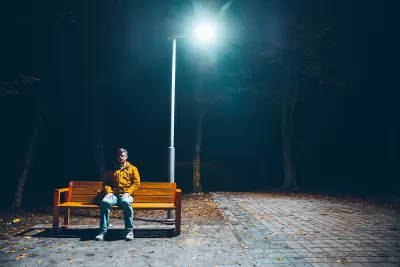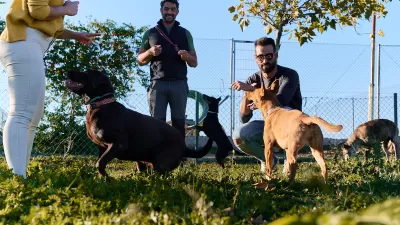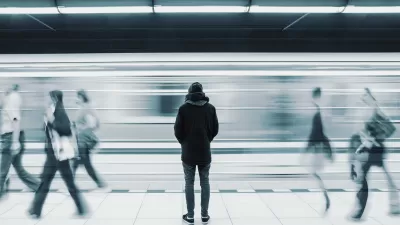Some theorists want to design cities to reduce loneliness and isolation. Others want to accommodate them.

Despite renewed attention due in part to the Surgeon General’s announcement that the nation faces a ‘loneliness epidemic,’ Alan Ehrenhalt, in a piece for Governing, notes that loneliness has been a perennial concern in American society since at least the early 20th century.
However, “Important societal changes pointing toward isolation have gathered steam in the past few decades.”
What does this have to do with urban planning? For some theorists, urban design and how we treat public space can have a significant impact on social interaction. For example, “Over the years, our parks have accumulated quite a few anti-social pieces of infrastructure: They have built unnecessary fences, placed spikes on sittable ledges and taken out benches instead of making them more inviting. Reversing those sorts of decisions would be a decent start.” Public and quasi-public ‘third spaces’ also foster social connections and offer places for people to rest and meet for free.
Others, like architecture critic Tom Brennecke, believe that cities should accommodate loneliness rather than change it. According to Brennecke, “many lonely people seem to seek social withdrawal and may, paradoxically, also benefit from being by themselves. … Public spaces should be designed to invite people to feel welcome coming alone.”
FULL STORY: The Long and Persistent History of Loneliness in America

Maui's Vacation Rental Debate Turns Ugly
Verbal attacks, misinformation campaigns and fistfights plague a high-stakes debate to convert thousands of vacation rentals into long-term housing.

Planetizen Federal Action Tracker
A weekly monitor of how Trump’s orders and actions are impacting planners and planning in America.

In Urban Planning, AI Prompting Could be the New Design Thinking
Creativity has long been key to great urban design. What if we see AI as our new creative partner?

Cal Fire Chatbot Fails to Answer Basic Questions
An AI chatbot designed to provide information about wildfires can’t answer questions about evacuation orders, among other problems.

What Happens if Trump Kills Section 8?
The Trump admin aims to slash federal rental aid by nearly half and shift distribution to states. Experts warn this could spike homelessness and destabilize communities nationwide.

Sean Duffy Targets Rainbow Crosswalks in Road Safety Efforts
Despite evidence that colorful crosswalks actually improve intersection safety — and the lack of almost any crosswalks at all on the nation’s most dangerous arterial roads — U.S. Transportation Secretary Duffy is calling on states to remove them.
Urban Design for Planners 1: Software Tools
This six-course series explores essential urban design concepts using open source software and equips planners with the tools they need to participate fully in the urban design process.
Planning for Universal Design
Learn the tools for implementing Universal Design in planning regulations.
Appalachian Highlands Housing Partners
Gallatin County Department of Planning & Community Development
Heyer Gruel & Associates PA
Mpact (founded as Rail~Volution)
City of Camden Redevelopment Agency
City of Astoria
City of Portland
City of Laramie





























